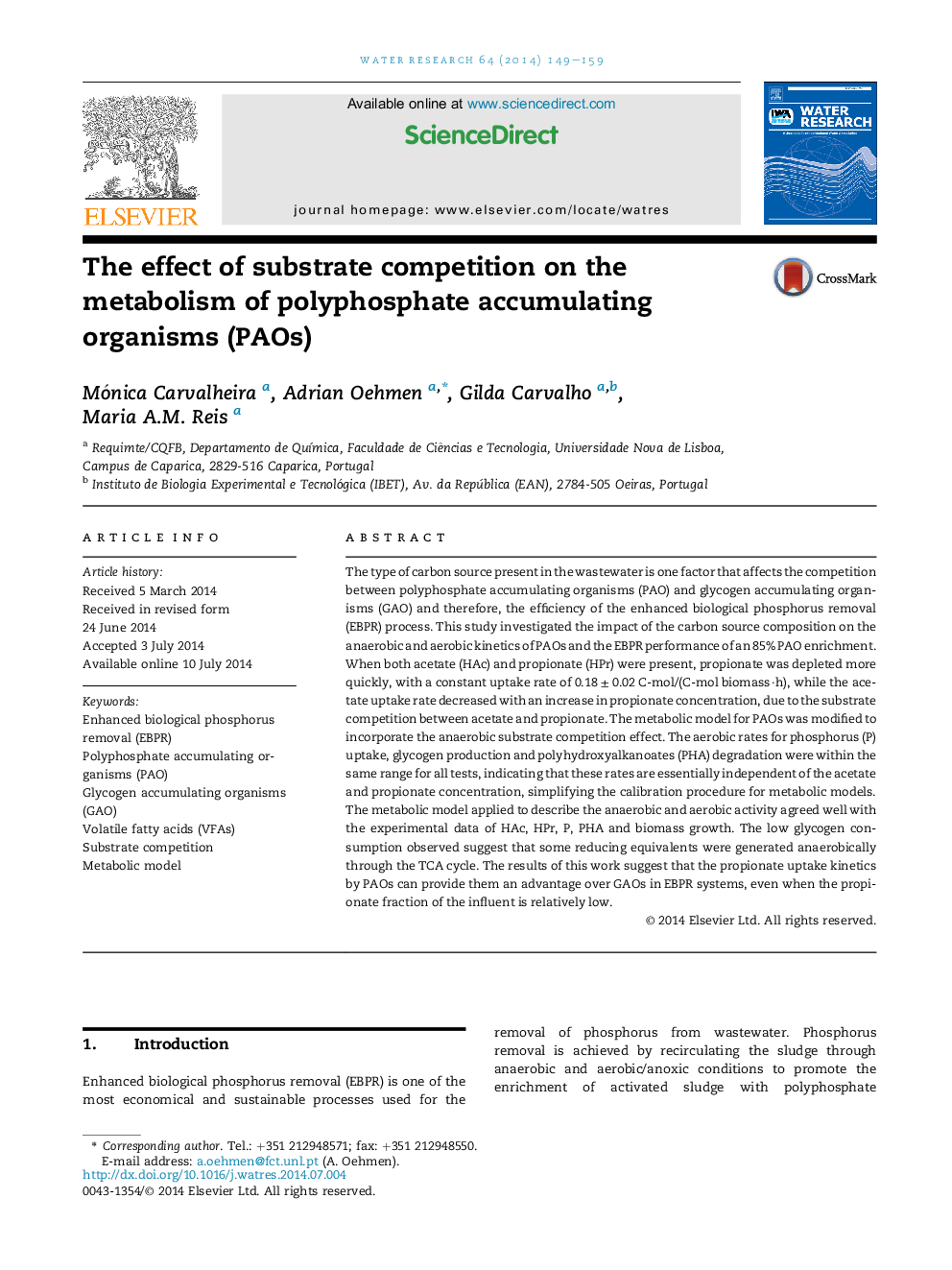| کد مقاله | کد نشریه | سال انتشار | مقاله انگلیسی | نسخه تمام متن |
|---|---|---|---|---|
| 4481438 | 1623104 | 2014 | 11 صفحه PDF | دانلود رایگان |

• An influent with 75–25% HAc:HPr favored the enrichment of PAO over GAO.
• Substrate competition between acetate and propionate uptake was observed.
• Substrate competition was incorporated into the metabolic model for PAO.
• Aerobic kinetic parameters relatively independent of carbon source.
• PAO metabolic model parameters do not change as a function of the VFA source.
The type of carbon source present in the wastewater is one factor that affects the competition between polyphosphate accumulating organisms (PAO) and glycogen accumulating organisms (GAO) and therefore, the efficiency of the enhanced biological phosphorus removal (EBPR) process. This study investigated the impact of the carbon source composition on the anaerobic and aerobic kinetics of PAOs and the EBPR performance of an 85% PAO enrichment. When both acetate (HAc) and propionate (HPr) were present, propionate was depleted more quickly, with a constant uptake rate of 0.18 ± 0.02 C-mol/(C-mol biomass·h), while the acetate uptake rate decreased with an increase in propionate concentration, due to the substrate competition between acetate and propionate. The metabolic model for PAOs was modified to incorporate the anaerobic substrate competition effect. The aerobic rates for phosphorus (P) uptake, glycogen production and polyhydroxyalkanoates (PHA) degradation were within the same range for all tests, indicating that these rates are essentially independent of the acetate and propionate concentration, simplifying the calibration procedure for metabolic models. The metabolic model applied to describe the anaerobic and aerobic activity agreed well with the experimental data of HAc, HPr, P, PHA and biomass growth. The low glycogen consumption observed suggest that some reducing equivalents were generated anaerobically through the TCA cycle. The results of this work suggest that the propionate uptake kinetics by PAOs can provide them an advantage over GAOs in EBPR systems, even when the propionate fraction of the influent is relatively low.
Journal: Water Research - Volume 64, 1 November 2014, Pages 149–159